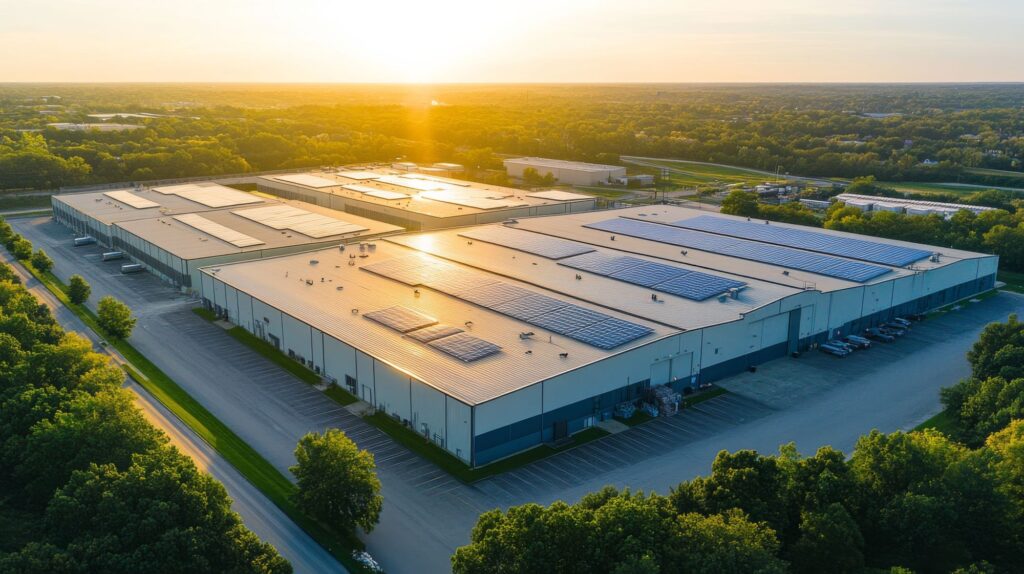Rightmove’s Quarterly Commercial Insights Tracker, for the second quarter of 2025, showed significant improvements in demand for office and retail properties from both investors and occupiers. But it’s the Industrial and Logistics (I&L) sector that continues to dominate.
Overall, the data from Rightmove found that demand to invest in commercial property is up by 20% versus Q2 2024, further highlighting the growth in action from investors in the commercial property sector and driven, at least in part, by reductions in the Bank of England’s Base Rate.
“Bank of England Base Rate has fallen as expected over the past 12 months and general consensus is that we’ll see further reductions this year,” said John Mitchell, Managing Director at Christie Finance. “The reduction in Base Rate is much welcomed and coupled with a narrowing of interest rate margins, the overall cost of borrowing continues to fall making investment more attractive.”
The I&L sector remains the most popular asset class for investors with demand to invest more than doubled (+105%) compared with the same period a year ago, while demand to lease industrial space is up by 41%. “The growth of the industrial sector has been one of the main stories so far this year,” said Andy Miles, Rightmove’s MD of Commercial Real Estate.
Sustained demand

The latest research from some of the UK’s most respected property agents and consultancies bears out Rightmove’s data. For instance, CBRE reports that UK logistics take-up increased in Q2 2025, totalling 6.7m sq ft, a 34% rise on Q1. JLL’s report on ‘big box’ logistics, typically over 200,000 sq ft, meanwhile, notes that H1 take-up hit 12.7m sq ft, 33% up on H2 2024.
What is also clear is that the market has responded to the sustained demand for good quality I&L space. According to Savills, “vacancy rate remains at its highest level since 2011” as a result of increased supply: both new completions and recycled second-hand space have outpaced net take up.
JLL says that headline Grade A availability for big box units now totals 45m sq ft, up 5% on the end of 2024. Savills adds: “The first half of 2025 has seen 10.30 million sq ft of speculative completions and an additional 5.95 million sq ft of second-hand space.”
Regional variations
Of course, there are considerable regional variations. In the South West, the headline vacancy stands at 6.52%. Supply is just 2.29m sq ft across ten units, according to Savills. In Yorkshire and the North East the vacancy rate is 8.63%. In London and the South East, on the other hand, supply has grown 18% year-on-year to 13.64m sq ft, meaning that occupiers benefit from increased choice, although prime properties on the edge of large towns and cities with strong transport links still lease quickly.
And yet, despite that overall surfeit of supply, the I&L sector is still telling a strong story when it comes to rental growth. JLL’s latest big box research shows that prime headline rents increased by 2% over the first six months of 2025. The company’s mid-box report is even more positive. “Average prime headline rents… increased by 4.3% in the year to June 2025, with 2.3% in Q2 2025 alone,” it said.

Of course, investment into I&L took a hit after the market experienced an unsustainable boom during the Covid-19 pandemic. However, it is now clear that capital is tiptoeing back towards the sector as a result of sustained demand, positive rental growth, more realistic pricing and those Base Rate cuts.
JLL recorded £3.2bn of I&L investment in H1 2025 – 27% higher than H1 2024. CBRE’s mid-year outlook echoes the shift. “Investment volumes are expected to rise in 2025… with increased demand for larger lot sizes,” it said.
Occupier demands
Of course, not all I&L properties are created equal and the latest research shows that occupiers are increasingly prioritising three main considerations: power, planning and ESG (environmental, social and governance) credentials.

When it comes to the former, occupiers are ever more power hungry as a result of the electrification of vehicle fleets and the automation of core functions. At the same time, it is no secret that the National Grid is stretched, meaning that properties that offer high levels of reliable power stand out from the crowd.
As ever in the UK, planning remains a risk, so occupiers are drawn to either developments with predictable timelines or high quality refurbishments. Environmental performance is also a draw, in part in a bid to meet occupiers’ own ESG targets but also due to the high cost of energy. Energy efficiency is key requirement.
So, the overall state of the market in I&L remains positive. However, landlords and developers still need to be on their toes and keep pace with changing occupier demands. Properties without access to plentiful power supplies and strong energy efficiency credentials are still at risk of being left behind.
Key trends for the rest of 2025 and into 2026
1. Vacancy peak
With speculative completions and second-hand space still arriving, Savills says that the near-term question is simple: can Q3/Q4 take-up absorb the flow? If yes, vacancy should peak and edge down into 2026, it says.
2. Mid-box outperformance
JLL’s reported 4.3% GB prime rent growth to June—and +2.3% in Q2 alone—suggests the best units will keep continue to outperform. It adds that this will continue for properties with access to a strong labour pool and good power supply.
3. The power premium becomes explicit

JLL suggests the market is already seeing rent premiums for units with secured power and that the next wave of leases is likely to formalise that advantage through clauses on additional capacity, shared upgrade costs and solar generation and export.
4. Secondary split
Older assets won’t be equally secondary, according to Savills. Those with decent yard sizes, expansion potential and good locations can be refurbished to Grade A standards, while more obsolete buildings will face greater difficulties unless landlords commit to significant capital expenditure.
Sources:
Rightmove Commercial Insights Tracker Q2
JLL, UK Logistics Mid Box Market Dynamics, Q2 2025
CBRE, UK Logistics Market Summary Q2 2025
CBRE, UK Real Estate Market Outlook Mid-Year Review 2025
Savills, UK industrial and logistics market outlook
Savills, The logistics market: National Overview
Savills, The logistics market in London and the South East
Savills, The logistics market in the South West
Savills, The logistics market in Yorkshire and the North East
Copyright © 2000-2025 Rightmove Group Limited. All rights reserved. Rightmove prohibits the scraping of its content. You can find further details here.